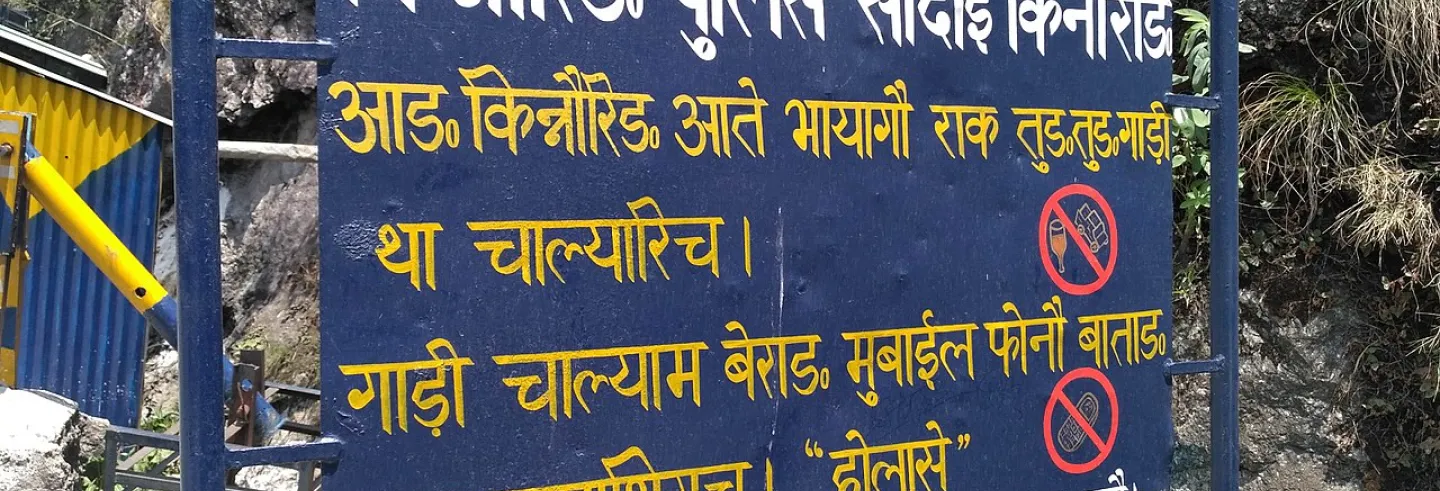India’s linguistic and cultural diversity is one of the subcontinent’s greatest resources. This resource, however, has tried and tested the country’s democratic values and institutions. In order for the state to function cohesively, it requires a common medium of communication or a ‘link language’. The classification of select languages as ‘official’ left hundreds of languages used by Indians as their mother tongues without any official recognition. People speaking these languages were relegated as linguistic ‘minorities,’ although the population of some of these minoritised groups exceeds 3 million — larger than the population of certain European nations (King 1997, quoted in Groff 2017).
Such unrecognised languages cannot be used as media of instruction in public schools, putting linguistic minorities at a disadvantage. The opportunity for students to learn in their mother tongue depends on whether it qualifies for the status of 'official language' as listed in the Eight Schedule of the Constitution. The sixth All India Education Survey of 1999 revealed that only 19 languages were used as media of instruction at different levels (Benedikter 2013). ‘Non-scheduled’ languages, even those with large number of speakers, such as Bhili (10 million), Santhali (7.4 million), or Gondi (3 million), are treated as an ‘auxiliary’ subject at the primary level.
Children when educated in a language that they do not fully understand end up missing out on the content being taught.
India has followed a Three Language Formula since 1968, which states have adopted, modified, and rejected to suit their needs and political priorities. Critics of the formula have underscored the policy’s failure to distinguish between mother tongues and umbrella regional languages, thereby ignoring the needs of minority students whose mother tongue is not the same as their regional language (Group on Minorities Education 1991). In such a scenario, these minority students have to learn four languages and three to four scripts.
This bias impacts learning outcomes. Children who are unfamiliar with the medium of instruction face greater learning challenges as compared to their peers (Jhingran 2005). Literacy rates for cultural and linguistic minorities in India tend to be significantly below the average. Nearly a quarter of all primary school children face moderate to severe learning disadvantages due to their linguistic background (Jhingran 2005). Drop-out rates tend to be higher among such students. Children when educated in a language that they do not fully understand end up missing out on the content being taught (Mohanty 2005). Along with the resulting dearth in learning outcomes, these language differences may also induce miscommunication between the students and their teachers (Groff 2017).
Children are adept at learning multiple languages at an early age, but such language acquisition is primarily through exposure and communication rather than imposition in the classroom (Kulkarni and Jolad 2019). The draft New Education Policy 2019 terms this ability of children a “social capacity that must be harnessed” to reap the “cognitive benefits of multilingualism.” It endorses instruction in the mother-tongue or the local language “at least until Grade 5 but preferably Grade 8.” It recommends ensuring “local languages, including tribal languages, are respected and that excellent textbooks are developed in local languages, when possible, and outstanding teachers are deployed to teach in these languages.” However, such steps cannot be taken unless these languages are formally recognised and legitimised by the state.
The census' delegitimisation of languages
The Constitution protects the interests of linguistic minorities and their right to establish educational institutions. But a significant challenge lies in state recognition and promotion of these minority languages and dialects as they undergo delegitimisation.
Those mother tongues that are not classified as ‘languages’ undergo subtle proscription. They lose the opportunity to be promoted through the state.
The inequitable manner by which minority languages are assigned their status originates from structural problems within the decennial censuses. The census, the primary aggregator of information on languages in India, is tasked with classifying these languages as either ‘languages’ or ‘dialects’. Most mother tongues are recorded under the latter category. Thousands of mother tongues are reported, which the census subjects to linguistic scrutiny and ‘rationalisation’. This process of rationalisation narrows down and selects which dialects or mother tongues are qualified to be classified as 'languages'. In the 2011 census, for instance, 19,569 raw returns of mother tongues were rationalised into 1,369 mother tongues, and finally regrouped into 121 languages.
Once a spoken variety of mother tongue qualifies as and is named a language, it becomes legitimate. Laws and policies may subsequently promote it through officialisation. Similarly, those mother tongues that are not classified as languages undergo subtle proscription. They lose the opportunity to be promoted through the state, including being included within the Three Language Formula (Groff 2017).
Whose nation? Whose language?
As with any other issue that involves groups with vested interests, the issue of deciding upon India’s lingua franca has attracted controversy ever since independence. The politics of language and language planning is influenced by narratives of nationalism, centralisation, and modernisation, which can be contextualised using the framework by Weinstein and Thayer (1990):
1. A national political regime requires an exclusive national language, with narratives such as ‘nation-building’ and ‘national unity’.
2. Centralised political regimes require a centralised language policy, such as the Three Language Formula.
3. Modern political regimes require the use of a foreign language, given the hegemony of English.
At independence, Jawaharlal Nehru advocated Hindustani as the national language for the sake of national unity. This ignored the existence of minority languages, despite the 1951 census listing over 700 of them (King 1997). When the state ignores or denies linguistic diversity, it minimises the status held by minority languages. Through invisibilisation of minority languages in the Constitution and the census, the state delegitimises the existence and usage of these languages, which may over time lead to their extinction. Along with this approach of the legitimisation of one and delegitimisation of many, centralised language policies like the Three Language Formula contribute to creating a hierarchy of languages, with English dominating the education system, followed by Hindi, then the regional dominant languages. The minority and tribal languages occupy the very bottom rungs, with very real consequences for their speakers.
Decisions on mother tongue rationalisation that award differing statuses to languages need to take into account the social and economic consequences for minority groups.
With the 2021 census around the corner, it is imperative that the officials take cognizance of the language status planning and (de)legitimisation underlying language classification by the census. The scrutinising frameworks used to classify mother tongues as ‘rationalised’ or as distinct languages need to be made transparent. An immediate step that the census can take is to release the full list of returned and rationalised mother tongues, for it is initially through acknowledging their existence that the status of a language can be elevated.
The census process of classifying languages needs to realise the potential long-term ramifications that materialise at the policy implementation stage. Decisions on mother tongue rationalisation that award differing statuses to languages need to take into account the social and economic consequences for minority groups. The educational and learning functions of mother tongues and the needs of children should be given higher priority than a blanket imposition of the Three Language Formula across India.











